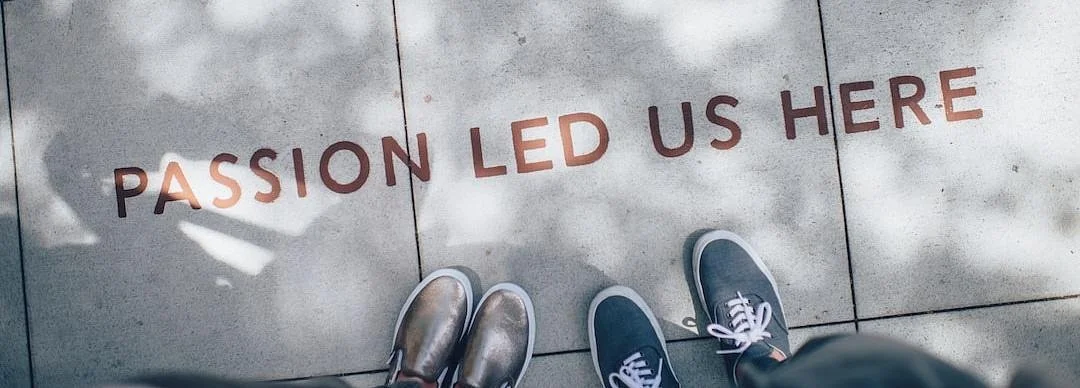On Comfort
By
Laura Plant
Published in September 2021 as part of the extended digital edition of Social Works? Open journal…
“I planted the leftover end of a packet of nasturtium seeds my dad had sent me in the post in a pot outside my front door. I was mourning the fact that in my new rental flat, the only outdoor space was a small concrete vestibule. I wanted somewhere to dig. A bed to call my own.”
At the end of my road there was a front garden that was wildly blanketed with nasturtiums which I walked past with envy most days, admiring the plants’ vigour. It disturbed and impressed me, especially since it was unclear to me whether this unruly patch was born out of choice by the occupants of the house or out of vanquish. The pot took off, in the weedy way that nasturtiums often grow, producing disc after disc of new life. I very quickly, pleasingly lost control.
Plunging my hands into a dank pile of compost was, like many of my peers, my crutch in times of crisis. With so many artists turning to cultivation in this turbulent moment, I wondered what exactly it was we were seeking by orientating ourselves within the garden as an extended space of critical practice what it was, I suppose, that brought us so much comfort. Perhaps, as was the case with my nasturtiums, the desire to make something that nourishes – both in a literal and cerebral sense – from nothing but dirt and water and light is a gesture towards becoming a little more self-reliant and a little less dependent on another’s hand in the ownership of our reproductive processes. Perhaps it is a way of wading through the thick collective grief we are accustomed to as part of life in late-capitalist Britain, searching for alliances with the land and seasonal knowledge. Or, following Maria Puig de la Bellacasa's insistence on the disruptive potential of care, it could simply be the experience to nurture and tend to something which gardening lends to radical practice.
I think back to the answer Deborah Levy gives to her own question, ‘how can a flower inflame a wound? It can and it does if it is a portal to the past.’ [1]
Beyond a yearning for the natural world, there is something more – something just out of reach – about what it means to situate oneself in the garden. About how it feels to keep a garden. A feeling from the gut – an itch, I suppose. A bodily and psychic tug.
Nasturtiums elicit swells of joy in me. However, like so many other plant species that populate our collective consciousness—or the dislocated ‘British’ flora which come with an untethered idea of national identity – they have been subject to a history of dispossession. The South-Central American genus was first taken to Europe at the hands of Nicholas Monardes – a name that lingers large around imperial botany – whose famed Herbal brought tobacco and cinchona bark to Spain, consolidating biopower in its colonial territories. Plant species like these which have been decontextualised become containers to carry testimony across geographies and temporal space. They channel extraction, knowledge erasure, ecological pain wherever they grow. They have their own dialogue with land, history and capitalism. The substance of violence remains within them. The presence of the nasturtium here in England is the result of a historical tide of economic and organic displacement which would be negligent to brush aside. A tide in which the garden is mobilised as a strategic vehicle of power.
To inhabit the garden in this terrain then, is to inhabit a position of unsettling ambivalence. On one hand, in tending a plot of land we foster attentive bonds with the soil, plants and creatures we share our backyard tenancy with, learning an acute environmental dialect. We become an extension of that which we tend—joining bodies together in order to make something new, joining metabolisms in the humus and fostering a deep love of the other. On another hand, in the garden we meet displaced vegetal beings whose journeys to our landscape are inseparable from violent occupations and biopiracy, the residues of which still govern access to land and continue to marginalise certain bodies from spaces of cultivation. Of course, as a place where subsistence practices can be reclaimed, the garden has been a prolific site of resistance against coloniality – from clandestine Creole gardens to crofters rebellions against landowners. However, it has also been the very medium through which violence is enacted. It was in the humid botanical hothouses of the British empire where the development of medicine and the exploitation of cash crops for their material gifts took place. It was on the plantations on expropriated land in which enslaved bodies were put to work for the accumulation of wealth. The last five hundred years of garden history have established a relationship of intense brutality, which sits starkly at odds with the character of gardening as a practice of care.
In her landmark volume of essays My Garden (book): Jamaica Kincaid situates herself in the garden as an oscillating subject – sometimes a tender caretaker while other times a ruthless master shaped by the spectre of the plantation. In her writing, her biography and homeland of Antigua become capacious vessels to hold her affective experience of the colonial project, exploring possession and ownership of both inner and external landscapes. In Unthinking Mastery, Julietta Singh recognises the craft of Kincaid’s prose as a process of ‘cultivating discomfort.’ [2] She describes how Kincaid’s writing reckons with the disruptive agency of the non-human and plots her own disconcerting fantasies of mastery in the gardener’s compulsion to control and tame whilst, as a split subject, also being oriented towards decolonisation of the garden space. Her writing becomes ‘a way of locating her own violent entanglements and inescapable contradictions while bringing her readers into the folds of their own. She enacts vital ambivalence – a practice of representation that emphasises, politicises, and embraces the subject’s contradictions and slippages.’ [3] Kincaid evokes the garden as a space replete with discomforting political pasts and unsettling presents, in which we confront our own complicity with different forms of environmental violence. It is hovering in this place of uncertainty in which Kincaid finds an approach to knowledge which goes beyond, or refuses, the coded, rational logic of enlightenment thought, holding complexity and discrepancy as a valuable mode of understanding.
When I encounter the garden then, perhaps it is a similar experience of discomfort – though distinct from the one conjured by Kincaid – which sits heavy in my stomach. Rather than purely furnishing me with pleasure, the garden is also a place in which I must foster a ‘practice of being uncomfortable in the world.’ [4] In the garden we nurture troublesome questions. The act of cultivation alone is a slippery one: we perform conquests over wild nature to pacify and contain it, whilst we also participate in an affectionate and diligent learning process to coax the soil and its’ inhabitants into growth. It is a place in which we both distance ourselves from the non-human as it’s entitled superior, in the fullest expression of anthropocentrism, and come closer to it, synchronising our own cycles of growth to its rhythms and altering our behaviour to act on its behalf. It is also a place in which, to dig to any level beneath the topsoil means confronting my whiteness. Because the racial dynamics on which horticultural institutions, land ownership and Western garden imaginaries are built still reverberate today, meaning access to green space is available disproportionately to those who are privileged and white. And because gardening cultures, as fortifications of white pleasure, are always inescapably haunted by the plantation, the botanic garden and the dispossessed ground.
In the garden I am occupied by a generative discomfort. Allowing its textures of vulnerability to fill us up, the garden demands that we sit with the uneasy and the unresolvable. Just like those unkempt nasturtiums down the road were neither wild nuisance nor prized crop – neither guests nor intruders – as they flourished out of hand, in the garden we are not unified subjects. Our knowledge and affective impressions are felt, irrational, embodied and inconsistent. In the garden, like the presence of an ectopic plant, my own presence presents ‘series of doubts upon series of doubts.’ [5]
With its offer to cultivate discomfort, the garden gives to the gardener something akin to Édouard Glissant’s notion of the ‘tremorous thought’ – pushing back against regimes of order and rationality which seek to make the world known in linear and succumbing instead to continual, undulating change. The indeterminate knowledge of the garden is an answer to Glissant’s invitation that we understand the world better when we tremble with it. [6]
Perhaps in the disorderly tug between these doubts – in the breathing spaces between them, where we inhabit our uncertainty – is where a hunger to incorporate growing into a critical artistic practice can be located. In fertilising botany as equivocal political grounds, perhaps the artist in the social field seeks friction as a tool for a fundamentally forward-facing practice. A seed deposited into a hole in the ground is always, after all, a hopeful investment in a different future.
IMAGE DESCRIPTIONS
Image 1: An archway shaped cut out of an old photograph from a book on topiary floats on a white background. Three loose line drawings of nasturtium leaves hover either side of the collage.
Image 2: Six loose line drawings of nasturtium leaves and stems in varying positions hover on a white background.
Image 3: A rectangular shaped cut out of an old photograph from a book on topiary floats on a white background. In the image the topiary is cut into the shape of Queen Elizabeth's crown.
Image 4: A circular shaped cut out of an old photograph from a book on topiary floats on a white background. Three loose line drawings of nasturtium leaves hover to the left side of the collage.
Image 5: A rectangular shaped cut out of an old photograph from a book on topiary floats on a white background. In the image the topiary is a very tall tower of ellipse-shaped bushes.
Image 6: Four loose line drawings of nasturtium leaves and stems in varying positions hover on a white background.
ENDNOTES
[1] Deborah Levy, The Cost of Living (London, Penguin Books, 2019), 107
[2] Julietta Singh, Unthinking Mastery: dehumanism and decolonial entanglements (Durham, Duke University Press, 2017), 149.
[3] Ibid., 158.
[4] Ibid., 151.
[5] Jamaica Kincaid, My Garden (Book) (New York, Farrar, Straus and Giroux, 1999), 15.
[6] Édouard Glissant, La Cohée du Lamentin (Paris, Gallimard, 2005), 24.









